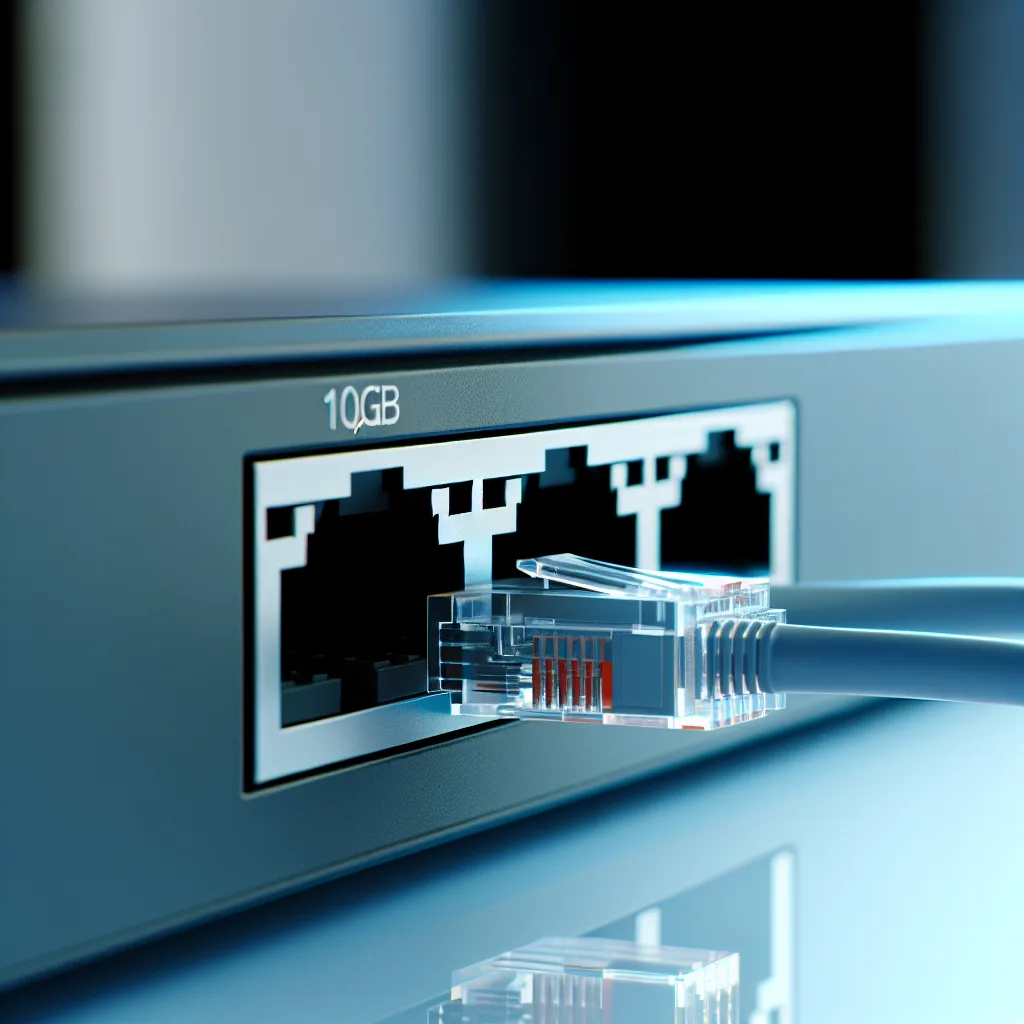Say goodbye to network bottlenecks with 10Gb RJ45 ports in your home setup
If you’ve ever dealt with slow network speeds at home, you know how frustrating it can be when your devices are bottlenecked by older hardware. Recently, I got my hands on some 10Gb RJ45 ports that I was able to take home from work — and honestly, the difference is noticeable. In this article, I want to share why 10gb rj45 ports might be something to consider if you’re looking to boost your home network speed without a complicated setup.
What Are 10Gb RJ45 Ports?
10Gb RJ45 ports are Ethernet ports that support 10 gigabits per second data transfer speeds, using the familiar RJ45 connector. Unlike the traditional 1Gb Ethernet ports most home setups use, these give you a huge jump in bandwidth without requiring optical fiber or specialized cabling. If you’re using Cat6a or better cabling at home, you can take advantage of these ports to streamline everything from file transfers to streaming multiple 4K videos at once.
Why Consider 10Gb RJ45 Ports for Your Home Network?
Having 10gb rj45 ports is like opening up the lanes on a highway. Suddenly, data can flow with fewer slowdowns even if several devices are active at the same time. Here’s what I’ve noticed:
- No Network Bottlenecks: Speeds from local NAS devices and high-bandwidth uses like gaming, video calls, or media servers are way smoother.
- Ease of Setup: They use the same RJ45 connectors, so upgrading doesn’t mean rewiring your whole house, just swapping out your switches or NICs.
- Future-Proofing: As internet providers offer faster speeds, having 10Gb ports means your home network can handle those increases without another round of upgrades.
What You Need to Know Before Upgrading
Before jumping into getting 10gb rj45 ports, check that your cables support the speeds — Cat6a or better is recommended for reliable 10GBASE-T connections. Also, your devices need compatible network cards, and your switch (or router with switch capabilities) must have corresponding 10Gb ports.
If you’re curious for a deeper dive into the technical side, you can check out the official IEEE standards for 10G Ethernet or get practical tips on upgrading from websites like Network World.
My Experience Using 10Gb RJ45 Ports
Taking these ports home changed my perspective on what’s possible with consumer networking gear. Streaming and transferring files felt instant, even when multiple devices were connected and active. Plus, because these ports look identical to regular Ethernet ports, there’s no new kind of cable or gadget to worry about.
Something else — if you’re into DIY or home lab projects, having 10gb rj45 ports opens up options for faster local storage solutions or virtual machine setups without having to get fancy with fiber optics.
Wrapping Up: Are 10Gb RJ45 Ports Worth It?
If your home network still feels like it’s stuck in the slow lane, 10gb rj45 ports might be what you need to speed things up without breaking the bank or overhauling your infrastructure. They’re a smart, straightforward upgrade that can make a big difference for anyone who demands a little more from their internet and local network.
For more hands-on advice and up-to-date tech insights, definitely keep an eye on trusted tech sites like Tom’s Hardware and manufacturer pages such as Intel’s network adapters.
So, if you’re thinking about bumping up your home network speeds, 10gb rj45 ports are a practical step worth considering. No fuss, just faster connections.
